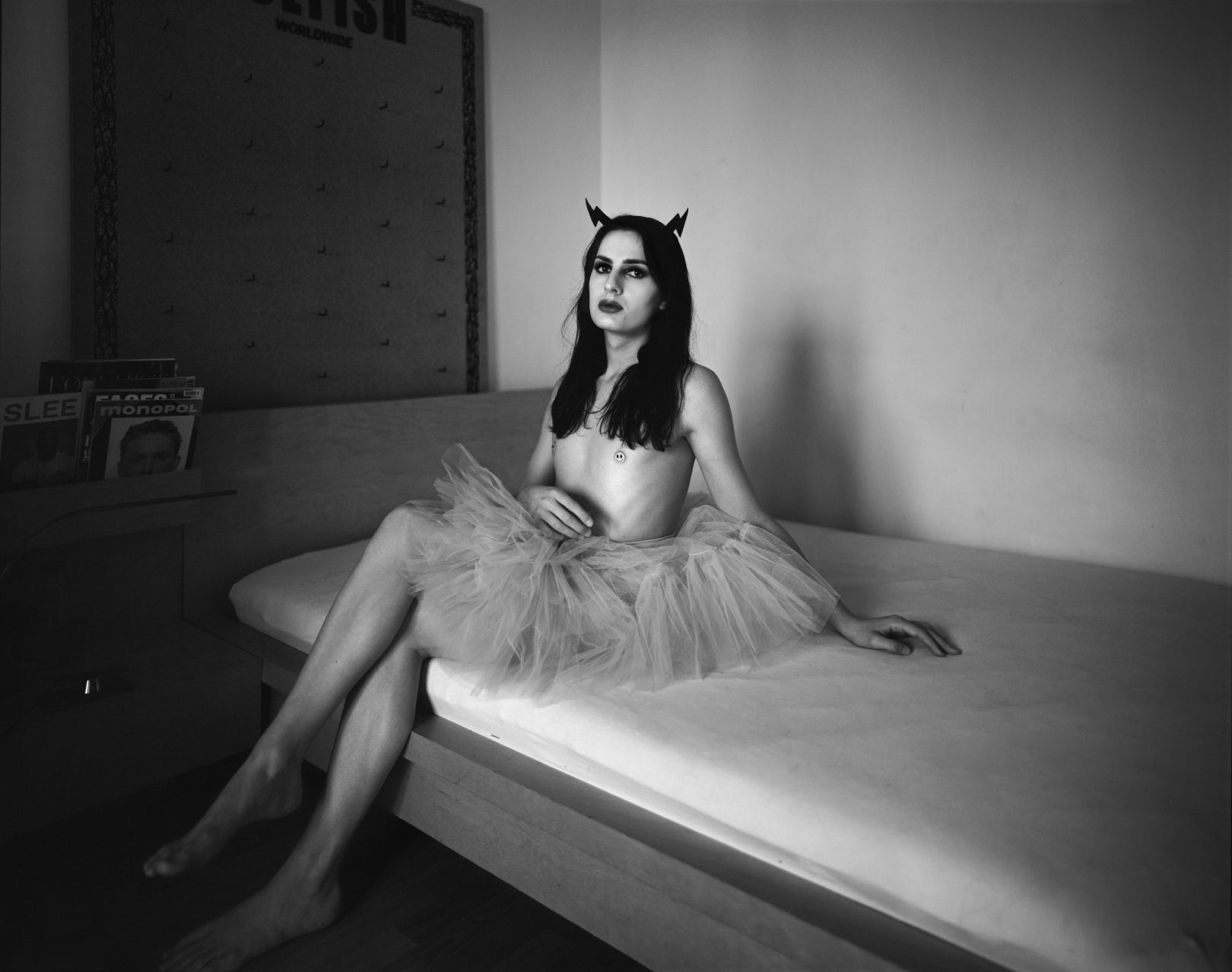Bodies that Matter: Guido Castagnoli
Black-and-white photographs are usually sad but it’s the opposite for Guido Castagnoli’s photo series. Inspired by Judith Butler, “Bodies that Matter” series reveals the beauty of freedom and being different. Enamored by the LGBTQ+ community in Berlin, Guido collects in his frames not only images but also feelings.
Could you tell us the starting point of “Bodies that Matter” project?
The first seed of this idea was sown about 5 years ago when I moved from Italy to Berlin. To enter in contact with the peculiar spirit and energy of this city (Berlin) with its own openness and tolerance to diversity inspired me to start a project about people that were in a kind of “Inbetween gender” “Gender fluid” or in “transition”. After few time working on the idea, I have realized that was still not the right moment (for me) to go deep in this project so I put it on stand by (I ́m very guided by my emotions and inspiration in my projects so I follow them everywhere they bring me, I discover this is the only way to be “true” in what I do). At that time, I discovered the work of American philosopher and gender theorist Judit Butler and fell in love with her ideas. In March 2017 the original spark of the project resurrected in my mind and everything was more clear so I decided to start again, giving the name of a work from Butler to the series. The focus was no more so strict as in 2012. I wanted to celebrate the wide, incredible spirit of diversity and freedom that you can breathe here in Berlin with its long, active and strong LGBTQ+ community history. A celebration of the infinite shades of grey in between what is (unfortunately still) perceived as the “norm”, the binary vision.
What did you aim with that series?
The first priority in my work is to work and to discover. It’s a personal development, it’s the will to create, relate, investigate what is new to me. There is not directly any political or propaganda idea behind. There is just the desire to “encounter” and translate the beautiful theatre which is humanity in something tangible and stable (as an image) which is a product of my sensitivity, or better a mix between the subject history and my own. But at the end it is also automatically a way to show to the world how much beauty resides in diversity and freedom. So yes, it is also a way to wake up the audience from the binary sleep of their conservative mind. But again this is a natural consequence and not the first motivation that guide me in my project.
How did you form an interaction with Berlin’s LGBTQ+ community?
As I told you, I photograph what I do not know, what make me curious, what inspire me. I’m completely out of this community. I used the connecting power of social media to get in contact with inspiring people. Facebook is really useful to reach out a community because you start from one of them and then you can reach the friends and the friends of friends of your first subject, widening slowly the size of the community you are able to reach. So in March 2017 I started to “adding friends” on Facebook, sending message to them explaining the idea and the process and planning to meet for the portrait.
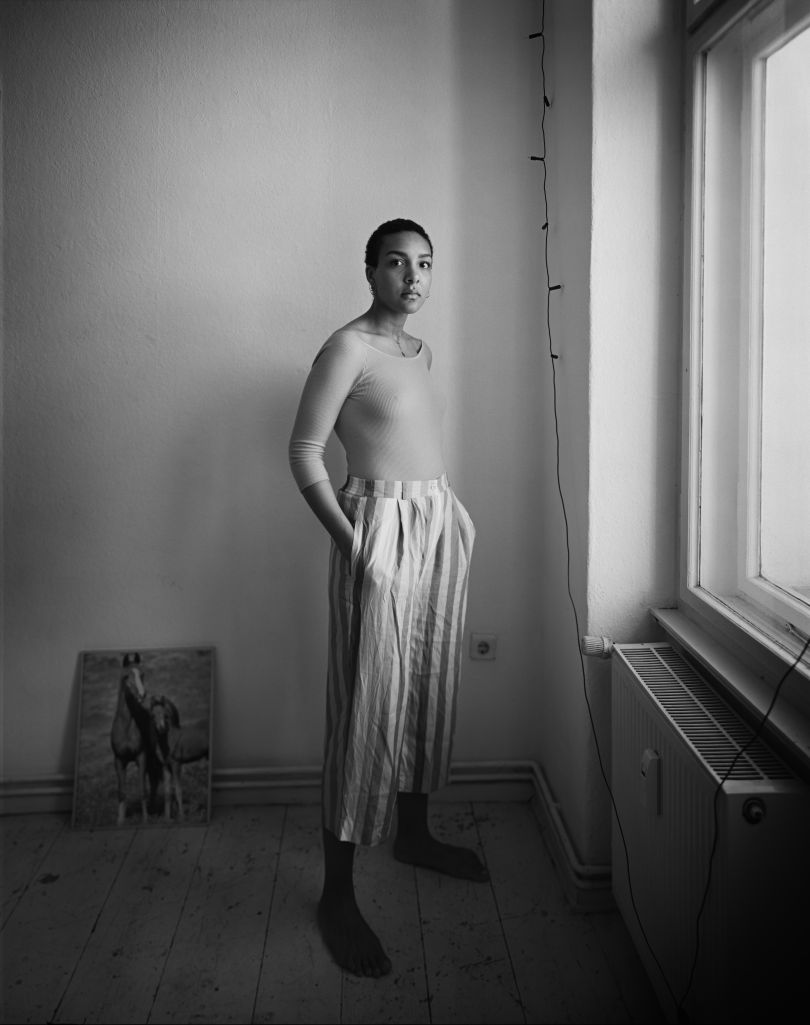
What can you tell us about the process?
For “Bodies that Matter”, the portraits are set up at the subject place which is the best way to let them feel in a safe and comfortable place. There were some cases where the subject disagree for different reason to shoot at home so the second option was to ask them to choose a place in the city they like and feel connected with. I arrive at their home. I start to look at the possible best location in the apartment. I work only with daylight coming form the windows so I usually choose a place near as possible to the windows. I set up the camera, then I start to frame the background without the subject. Background is really important to me and are not just “background”. Then I start to ask the subject to come in the frame to see if the proportion subject/ambient are working or not. I make some change to find harmony between the subject and the environment. During this phase I also start to talk with the subject about the process; telling them we are going to shoot just two pictures. Explaining that there will be a moment where I will ask them to stay really still, to freeze themselves, both for technical reason but it ́s also part of the feeling I would like them to have during the final click: I ask them to not just try to stay still but instead to “feel” this stillness in a kind of performative way. It ́s a pose but at the same time I try to destroy this sense of “posing” in the picture so I always let the subject choose a pretty simple position, making some corrections if I look something that let me feel they are posing…It ́s like to try to find authenticity in a process that is for its own nature a fake, a representation.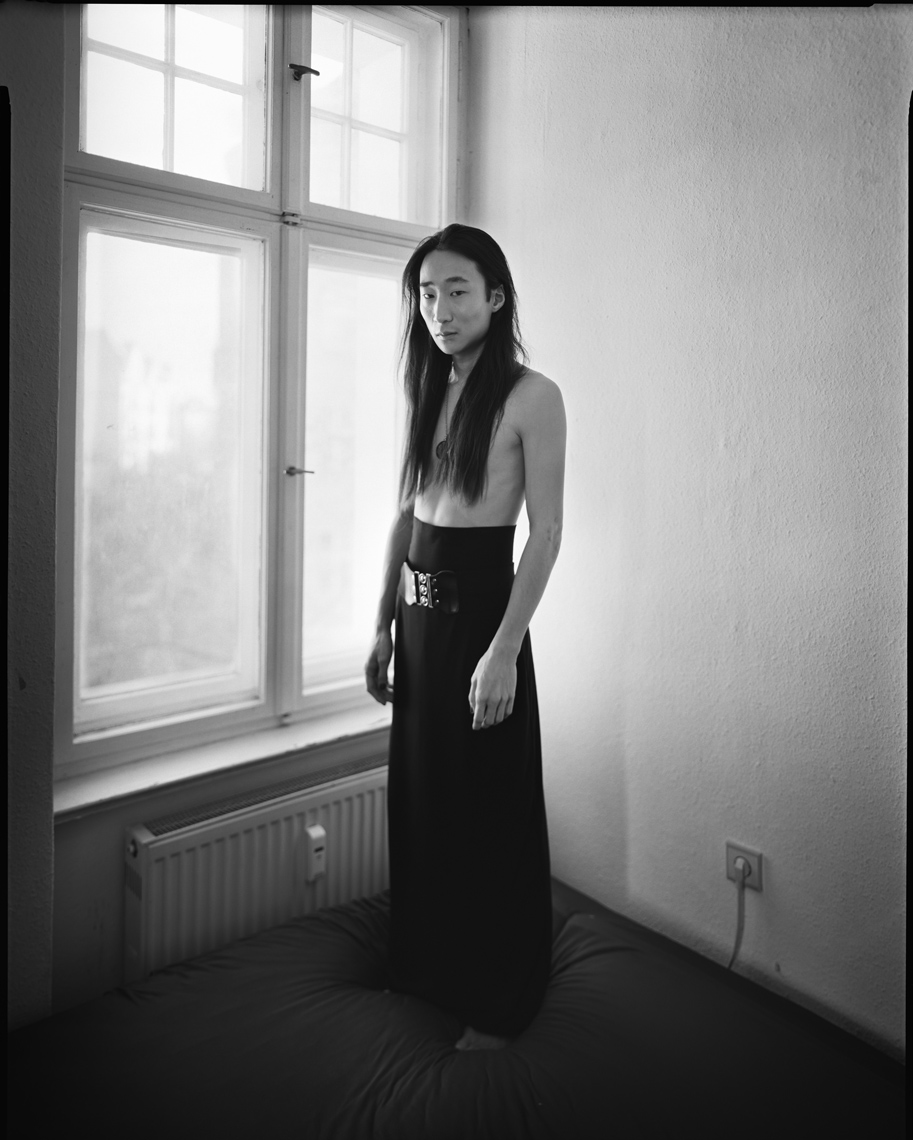
Did you collect personal stories from your subjects?
I collect the feelings and the experience that comes form the time we spend together for the portrait session. But I do not write down anything, like interviews if that is what you meant. I meet my subject for the first time when we make the portrait. The process needs a lot of concentration. So, yes, there is also some words about us… sharing little pieces of our own “story” but we invest our time mainly to focus on the process… which is at the end anyway an intimate way to get known each other.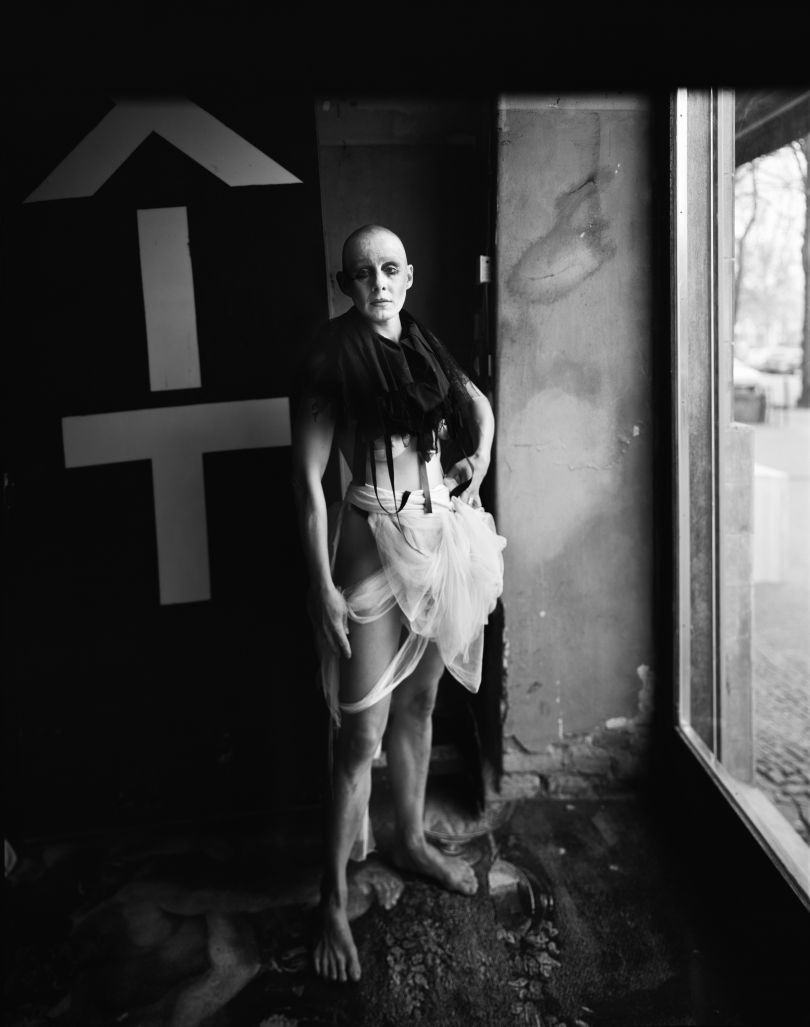
Why did you prefer analogue camera in this project?
It’s not just about analog. I shoot with a large format 8×10 inches (20x25cm) camera which is very different to use in comparison with any 35 millimeters (even analog) cameras. It is a quite slow process which leads you to shoot really less than with any other reflex small format camera. Moreover, I impose to myself the rules to shoot just two frames for every subject I take portrait of. So every shot is charged with a strong tension as there is very few margin for errors. I also really like the idea that if you have to choose between just two picture one is always the best and usually it is beautiful maybe also for the reason that, at the end, you have to live with what you got. In second instance the 8×10 inches analog negative is capable of recording (both in terms of resolution and “color” rendition or shades of grey) a quality which is still unsurpassed by any digital system. 8×10 has also its own unique aesthetic as it can produce images with a very short depth of field… Something which is especially visible if you look at the real print in a big size: The eyes of the subject are always in focus but then there are immediately “non in focus” areas and background which contribute at the final tridimensional quality of the images.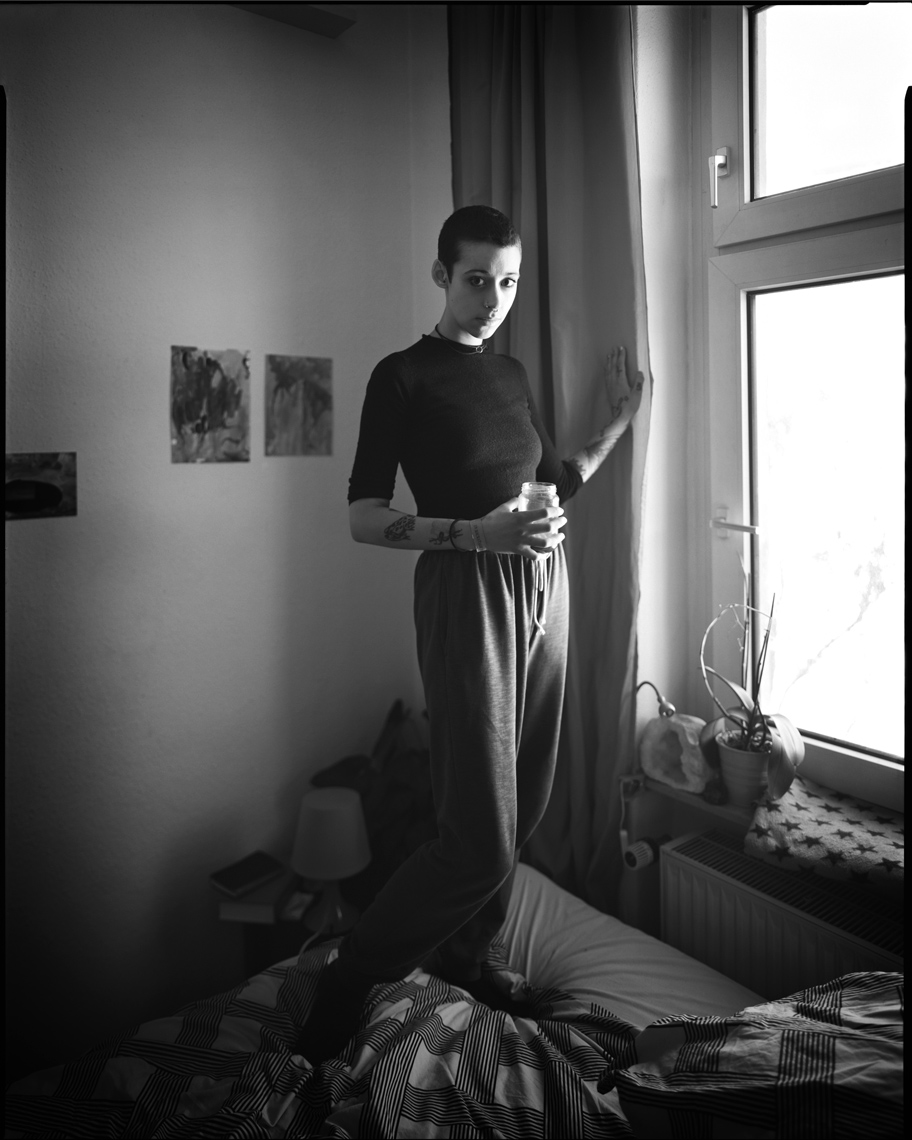
In your statement, you said “The “click” at the end of the process is an intense moment of consciousness and presence.” Can you please elaborate on that?
After the portrait session, many of my subjects report me how emotional was to stay in front of this camera (the camera is big enough to let the subject have the idea that they are alone with the camera, they almost do not see me). This performance to stay still guide the subject to be really there, in the moment, present and vibrating of tension and energy. And it ́s the same from my side. To use this camera is quite complex, you have to make a lot of movements in order to take the pictures. All this concentration makes you very present and conscious.
